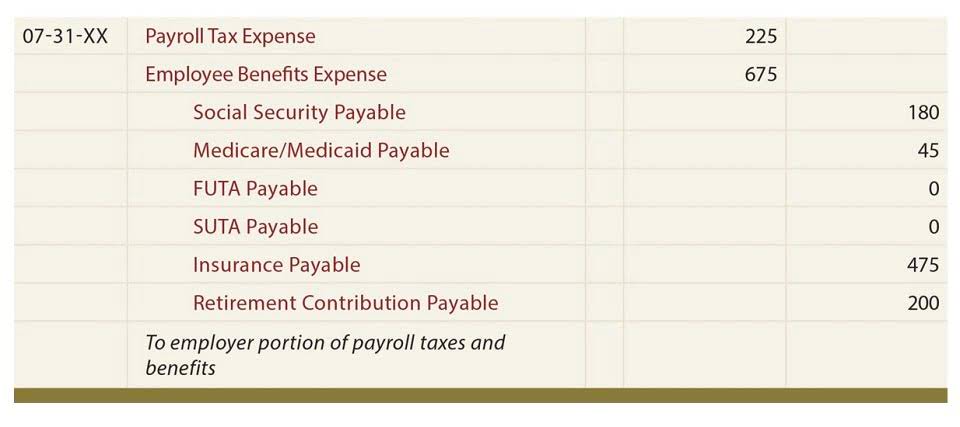
The success of any business depends on using the appropriate construction billing method. Construction billing is the process of invoicing clients for completed construction work, including labor, materials, equipment rental, and other project-related expenses. Effective billing practices help ensure that a construction company receives timely payment for its work and helps to maintain positive cash flow. Accurate record-keeping, detailed invoicing, and clear payment terms are crucial for billing.
Union Payroll & Reporting
Progress-based billing is a little more complex – because it’s designed to spread your income over the length of a project. The trick is to make sure your back is covered before the construction project starts. The client hasn’t yet paid their dues and you’re increasingly beginning to wonder whether they’re actually going to. If you’re already a pro and want to jump straight to finding the right tool – check out our recent look through the runners and riders for the best construction invoicing software. As mentioned earlier, GCs will have to send further documentation for their payment applications to be accepted. Procore is committed to advancing the construction industry by improving the lives of people working in construction, driving technology innovation, and building a global community of groundbreakers.
Exploring the 7 Top Construction Billing Methods: How to Choose the Right One for Your Business?

However, it should be approached with caution and always within the ethical boundaries and contractual agreements. Each project provides specific challenges that must be addressed while responding to changing site conditions. These projects also require adjustments due to location-specific considerations. One of the most frequent mistakes is not setting up your chart of accounts properly. The chart of accounts is the backbone of your financial reporting and tracking, so a well-organized structure is crucial. If your accounts are too general or incorrectly categorized, it can lead to confusion when you try to generate reports or track specific project costs.
The Ultimate Guide to Retainage in the Construction Industry

Before you start using QuickBooks in your day-to-day operations, it’s a good idea to review your setup and run a few test transactions. Check that your accounts are correctly linked, your job costing system is functioning properly, and your payroll settings are correct. You can create test invoices, make dummy payments, and review reports to ensure everything is set up correctly. If you’re in the construction business, you know how chaotic managing finances, projects, and payroll can get. In this guide, we’ll dive deep into how QuickBooks for construction can transform your business, covering everything from setup to advanced tips. Let’s simplify the chaos and get you on track to better construction accounting.
Which Method is Best?
Professional invoices are generally sent to clients for services and bills are sent to customers for products. As we’ll discover, there are several ways to price up a construction invoice. Each project is its own unique beast, so coming up with a one-size fits all sample construction invoice is a fool’s errand.
- It can also generate tax forms like W-2s and 1099s, ensuring you’re ready for any audits or filings without a headache.
- To put it simply, overbilling is the practice of billing in excess of percentage complete.
- This amount, which normally ranges between 5 and 10%, protects the customer from inadequacies or problems.
- Having to pay a subcontractor within 30 days when a progress payment may not come for another two months could impact cash flow and prove detrimental to the project as a whole.
- By implementing these practices, construction businesses can ensure effective billing practices and maintain positive cash flow, ultimately leading to the business’s success.
Construction Time and Materials Invoice
A general contractor is responsible for overseeing a construction project’s day-to-day activities. The job includes itemizing all materials, equipment, and labor, so that you’re able to provide an accurate bill for your client. Use this template to help ensure that you, your team members, and your subcontractors are paid in a timely manner. retained earnings balance sheet Manual billing processes and outdated software are prone to errors and inefficiencies. Modern construction billing software equips construction teams with industry-specific tools to manage project costs, approve changes and monitor vendors.
Step 2: Tracking Work Progress & Preparing Documentation
Frequent reconciliation of billed amounts with https://www.bookstime.com/ project milestones or percentage completions ensures that revenue recognition practices comply with accounting standards. This practice not only maintains financial integrity but also prevents profit fade by ensuring that profits are realized as per the actual work completion. The decentralized nature of construction projects, coupled with fluctuating costs and long-term contracts, necessitates a more dynamic and adaptive accounting approach. The work in progress (WIP) report is a project management and accounting tool that illustrates the status of a construction project and determines whether it is on budget, overbilled, or underbilled.
- For construction businesses, it’s essential to have categories that reflect your unique needs, such as separate accounts for job costs, materials, labor, overhead, and more.
- Without a backup, you could lose valuable financial data that’s crucial for your construction business.
- Efficient billing is a critical aspect of successful construction project management.
- This clause mandates that the client retains a certain percentage of each progress bill until a predetermined project value is reached.
- This step helps avoid disputes and ensures that all billings align with the terms agreed upon in the contract.
- You can easily create timesheets, either manually or through integrations with time-tracking apps, and assign those hours to relevant jobs.

For example, you can track materials, labor costs, and even subcontractor expenses, all tied to a particular project. In QuickBooks, your Chart of Accounts is the backbone of your financial system. For construction businesses, it’s essential to have categories that reflect your unique needs, such as separate accounts for job costs, materials, labor, overhead, and more. You may need to create custom accounts like “Job-Specific Expenses” or “Work-in-Progress” to track project costs effectively.
- By categorizing costs in this way, you can keep an eye on the budget and avoid going overboard.
- Choosing the right billing method is essential to ensure accurate billing, reduce disputes, and maintain profitability.
- QuickBooks for construction is a game-changer for contractors looking to streamline their accounting and project management processes.
- Using unit rates for cost-plus or time and material contracts and billing will allow you to adjust more efficiently instead of working with lump-sum or fixed-price contracts.
- Nobody wants to spend hours digging through job orders and purchase reports, but an effective construction invoice is the key to keeping your construction business profitable.
- Rippling helps increase savings, automate busy work, and make better decisions by managing payroll, HR, IT, and spend in one place.
Double check for double payments

Customize work-specific details, such as client name, material(s), date, invoice number, payment due date, description of work, labor hours and rate, construction invoice and miscellaneous charges. If you are struggling with your construction billing process, it is probably because you lack the support of the right technology. Investing in a web-based construction management software like RIB CX can positively impact your billing strategies and provide your company with a substantial competitive advantage. Since this payment method depends on a project’s progress, it is also beneficial to clients who can make their payments as they see changes in progress at the job site. They can enjoy greater flexibility by breaking up lump sum payments into more manageable, periodic payments over the course of the project.

